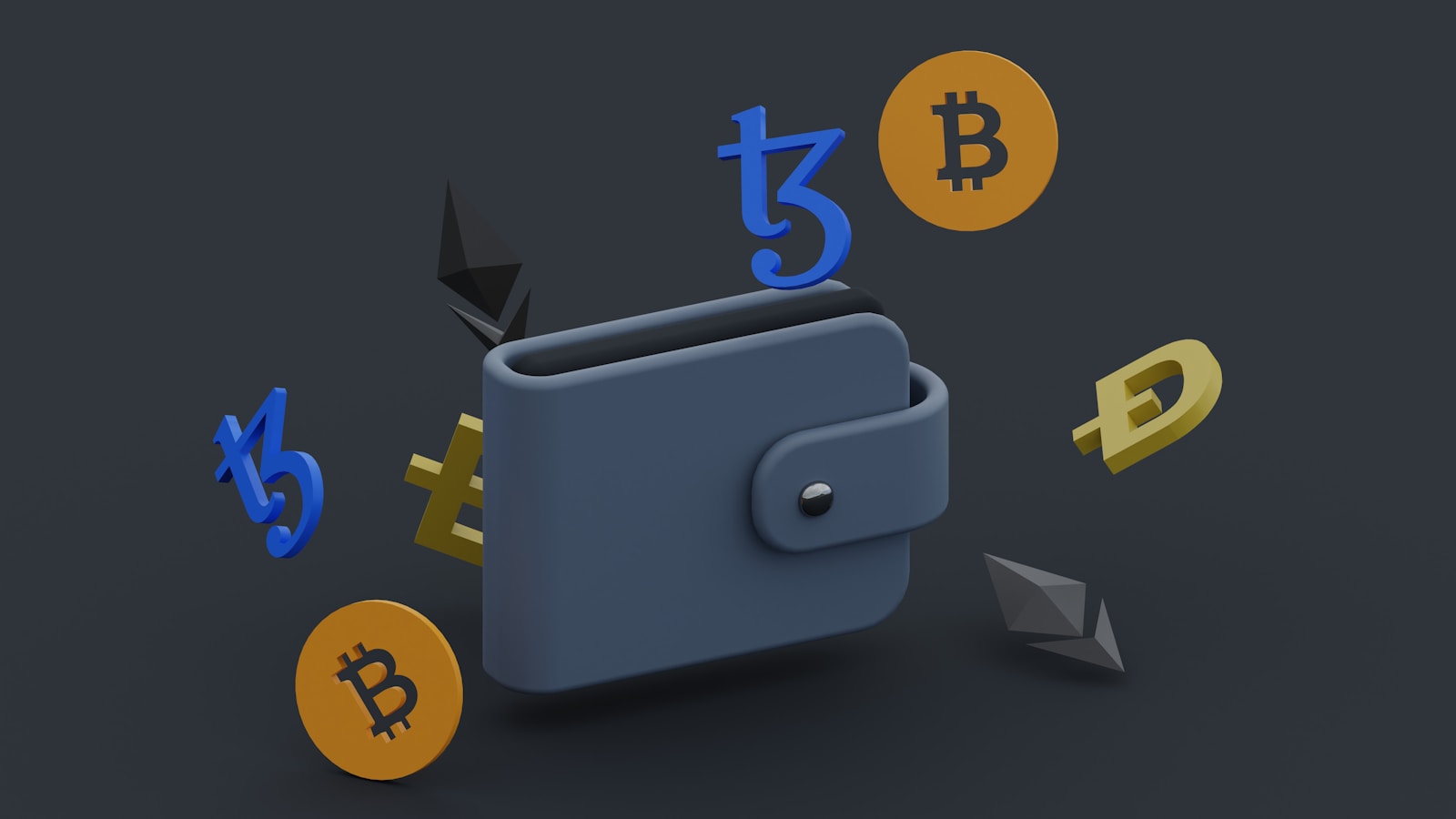Centralized trading venues remain the most popular choice for many users due to their high liquidity and user-friendly interfaces. These platforms act as intermediaries, managing user funds and order matching, which allows for faster transactions but requires trust in a single entity. If you prioritize ease of use and quick access to a wide range of assets, centralized services are often more suitable.
Decentralized counterparts, on the other hand, operate without a central authority, enabling peer-to-peer transactions directly on the blockchain. This approach offers greater control over private keys and reduces the risk of platform hacks or shutdowns. However, it may come with trade-offs such as lower liquidity and potentially higher transaction costs depending on network congestion.
The following breakdown highlights practical differences between these two types of trading platforms. Understanding these distinctions will help you choose the right solution based on your priorities–whether that’s convenience, security, or autonomy over your digital assets.
Crypto exchanges vs DEX: simple comparison
For those interested in trading digital assets, choosing between centralized platforms and decentralized alternatives depends primarily on control preferences and security considerations. Centralized venues act as intermediaries that manage user funds and order books, offering a user-friendly interface and often higher liquidity. In contrast, decentralized platforms enable direct peer-to-peer transactions without custody of assets, prioritizing transparency and trustlessness.
Centralized services provide features like advanced charting tools, customer support, and rapid execution speeds due to their off-chain order matching systems. However, these advantages come at the cost of requiring users to deposit funds into the platform’s wallets, which introduces counterparty risk. Conversely, decentralized protocols operate via smart contracts on blockchains such as Ethereum or Binance Smart Chain, allowing users to retain ownership of private keys throughout the trading process.
Technical differences in order execution and liquidity
On centralized venues, order books are maintained by the platform itself where buy and sell orders match instantly within a controlled environment. This model supports high-frequency trading strategies due to minimal latency. Meanwhile, decentralized exchanges rely on automated market makers (AMMs) or on-chain order books executed through smart contracts. AMMs use liquidity pools funded by users who earn fees proportional to their contribution. For example, Uniswap employs constant product formulas (x * y = k) to facilitate swaps without traditional order matching.
This distinction impacts slippage and transaction costs significantly. Centralized platforms often offer tighter spreads but charge withdrawal fees and may impose limits based on KYC policies. Decentralized systems face variable gas costs depending on network congestion but allow unrestricted access for anyone with a compatible wallet address.
User experience and security implications
When engaging with centralized operators, users benefit from streamlined onboarding processes including fiat integration options such as bank transfers or credit cards. These services typically implement compliance measures like Know Your Customer (KYC) verification to meet regulatory standards. On the other hand, decentralized apps require only wallet connectivity; no personal data submission is necessary unless external services are involved.
Security models differ substantially between these two approaches. Custodial platforms safeguard funds using cold storage solutions combined with insurance policies but remain vulnerable to hacking attempts targeting their infrastructure–as demonstrated by incidents like Mt. Gox or Coincheck breaches. Decentralized protocols reduce single points of failure since trades occur directly from user wallets; however, smart contract vulnerabilities or phishing attacks pose risks that demand cautious interaction and understanding of contract audits.
Practical considerations for traders at different levels
- Beginners: Centralized venues provide intuitive interfaces with clear fee structures suitable for initial exposure to asset swapping.
- Intermediate: Users seeking more autonomy might explore decentralized protocols enabling non-custodial trading while managing gas expenses carefully.
- Advanced: Experienced traders leverage both types depending on strategy–using centralized services for speed-sensitive arbitrage while utilizing decentralized ecosystems for access to emerging tokens unavailable elsewhere.
Selecting between these two trading environments involves assessing priorities related to control over funds versus convenience of service layers. Newcomers should start with regulated intermediaries before experimenting with permissionless systems that empower autonomy but require greater vigilance regarding operational security.
How to Deposit and Withdraw on Centralized Platforms and Decentralized Networks
Depositing funds on a centralized trading platform usually requires users to complete identity verification before initiating any transfers. After registration and KYC approval, clients can deposit fiat money via bank transfers, credit cards, or payment services. Cryptocurrency deposits are simpler: users generate a wallet address on the platform and send assets from their personal wallets. Withdrawal processes mirror deposits but often include additional security layers such as two-factor authentication (2FA) and withdrawal whitelists.
Conversely, decentralized networks eliminate intermediaries by enabling direct asset transfers between user-controlled wallets and smart contracts. Depositing digital tokens involves connecting a compatible wallet (e.g., MetaMask or Trust Wallet) to the platform interface and approving token transfers through blockchain transactions. Since decentralized platforms do not hold custody of funds, withdrawals happen instantly once transactions are confirmed on-chain, though transaction fees depend on network congestion.
Step-by-Step Deposit Procedures
- Centralized Platform: Log into your account, navigate to the “Deposit” section, select the desired currency type, copy the generated address or use QR code for crypto deposits, then initiate transfer from your external wallet or bank.
- Decentralized Network: Connect your Web3 wallet to the platform’s interface; choose “Deposit” or “Add Liquidity”; approve the smart contract interaction via wallet signature; confirm gas fees; wait for blockchain confirmation.
The major technical distinction lies in custody: centralized venues store user funds internally until withdrawal requests, while decentralized systems keep assets in user wallets until explicit transaction approvals occur. For example, Binance allows fiat deposits through multiple gateways with varying processing times (instant for card payments versus up to several days for wire transfers), whereas Uniswap requires no deposit per se–users trade directly from their wallets without transferring tokens onto an exchange’s ledger.
Withdrawal workflows also differ significantly. On centralized platforms, users must specify destination addresses carefully because incorrect inputs may result in permanent loss due to lack of control over blockchain-level reversals. Furthermore, some platforms impose minimum withdrawal thresholds and charge fixed or percentage-based fees depending on asset type – Ethereum withdrawals typically incur higher costs during peak network usage compared to stablecoins like USDT.
An important consideration is risk management: centralized solutions introduce counterparty risks including potential freezes during regulatory compliance checks or cyberattacks; decentralized alternatives rely heavily on user diligence to secure private keys since no customer support can reverse erroneous transactions. For new traders aiming at straightforward deposits and withdrawals with customer assistance available, centralized platforms offer convenience combined with robust infrastructure. Experienced users who prioritize sovereignty over assets often prefer interacting directly with decentralized protocols despite occasional complexity in managing gas fees and smart contract approvals.
Security differences explained
The primary security distinction between centralized trading platforms and decentralized counterparts lies in control over private keys. Centralized venues manage users’ assets within custodial wallets, which means the platform holds the private keys necessary to access funds. This creates a single point of failure; if the platform is compromised through hacking or internal fraud, user assets are at risk. For example, the 2014 Mt. Gox breach resulted in losses exceeding $450 million due to vulnerabilities in the centralized custody system.
Decentralized platforms operate on blockchain protocols that allow users to retain ownership of their private keys throughout every transaction. This significantly lowers counterparty risk since funds are not stored by any intermediary but remain in users’ wallets until trades are executed via smart contracts. However, this security model shifts responsibility onto individuals; loss of private keys or mistakes in using wallet software can lead to irreversible asset loss without recourse.
Custodial risk versus user responsibility
Centralized platforms typically implement rigorous security measures such as multi-signature wallets, cold storage solutions, and compliance with regulatory standards like KYC/AML procedures. While these safeguards reduce some risks, they cannot eliminate threats from insider breaches or targeted cyberattacks on platform infrastructure. The Binance hack of 2019 demonstrated how even major centralized services face sophisticated attacks despite advanced defense systems.
On decentralized trading venues, security depends heavily on smart contract integrity and user operational security. Smart contracts undergo audits to minimize vulnerabilities; nevertheless, bugs or exploits can still exist–as seen in several DeFi protocol incidents where flaws led to significant financial damage. Users must also secure their seed phrases and employ hardware wallets or trusted software interfaces to maintain protection against phishing or malware attacks.
Trading Fees and Costs: Centralized Platforms vs Decentralized Alternatives
When assessing transaction expenses, centralized platforms typically charge a fixed percentage fee per trade, often ranging from 0.1% to 0.5%, depending on the volume and account tier. These fees usually cover order execution, platform maintenance, and customer support services. In addition, certain platforms impose withdrawal fees or minimum deposit amounts, which can influence overall cost-effectiveness for smaller traders.
Decentralized trading protocols operate differently; they generally require users to pay blockchain network fees (gas costs) for executing trades directly on-chain. These fees fluctuate based on network congestion and the underlying blockchain’s consensus mechanism. While no intermediary collects a direct commission, gas expenses can sometimes surpass centralized platform fees during peak periods.
Fee Structure Variations Between Platforms
A key difference lies in how trading costs are structured. Centralized venues commonly implement maker-taker models, where makers receive rebates or reduced fees to incentivize liquidity provision, while takers pay higher rates for immediate order fulfillment. For example, Binance offers maker fees as low as 0.02%, whereas taker fees start at 0.04%. Such differentiation encourages market depth but complicates fee calculations for casual traders.
Conversely, decentralized networks utilize automated market makers (AMMs) that incorporate embedded swap fees–usually between 0.2% and 0.3%–directly into each transaction to reward liquidity providers. Uniswap v3 charges a standard 0.3% fee per swap distributed among LPs proportionally to their stake in the pool. This model simplifies user understanding since the fee is included transparently with every trade.
An illustrative example is trading Ethereum-based tokens: executing a trade on a centralized service might incur a straightforward fee of around $5 per $10,000 traded, while swapping assets on an Ethereum AMM like SushiSwap could involve paying up to $30 in gas during high demand times plus a ~0.25%-0.3% swap fee.
The choice between these platforms often depends on user priorities: those favoring predictable expenses and customer service may prefer centralized options despite potentially higher fixed charges; participants seeking autonomy and permissionless access might accept variable gas costs inherent in decentralized environments as part of their strategy.
User Experience Evaluation: Centralized Platforms vs Decentralized Protocols
For users prioritizing speed, liquidity, and customer support, centralized platforms currently provide a more streamlined interaction. Their interfaces are often polished with integrated fiat on-ramps, advanced order types, and responsive assistance–features that significantly reduce friction for newcomers and active traders alike.
Conversely, decentralized protocols offer unparalleled control over funds and enhanced privacy through trustless smart contracts. However, their user experience can be hindered by complex wallet integrations, variable gas fees, and slower transaction finality, requiring a steeper learning curve especially for those unfamiliar with blockchain mechanics.
Key Technical Insights & Future Directions
- Interface Design: Centralized platforms leverage centralized databases enabling real-time order books and instant trade execution. Decentralized alternatives depend on on-chain transactions that inherently introduce latency but gain from composability within DeFi ecosystems.
- Security Trade-offs: Custodial services simplify usage but centralize risk; non-custodial models shift responsibility to users, emphasizing the importance of secure key management tools and user education.
- Scalability Impact: Layer-2 solutions and cross-chain bridges promise to enhance decentralized protocol responsiveness without sacrificing decentralization principles.
- User Onboarding: Simplified wallet abstractions and seamless fiat-to-token flows are critical for wider adoption of decentralized systems.
The evolution of hybrid architectures combining elements of both paradigms is likely to redefine expectations around usability and security. For instance, emerging platforms implement non-custodial custody alongside intuitive frontends that mask blockchain complexity behind familiar design patterns. Such innovations indicate a future where decentralized attributes coexist with user-centric convenience.
Ultimately, understanding the nuanced trade-offs between these platform types empowers individuals to select environments aligned with their priorities–whether that’s frictionless trading or sovereign asset control–while preparing them for ongoing advancements shaping the transactional landscape.





